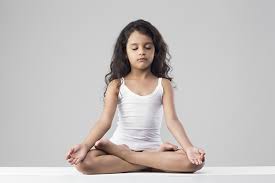Our paediatric care is to provide wholesome and authentic care for children through Ayurveda. Being very delicate in their physical and mental maturity , children require expert hands to provide the care that they deserve. A child when nurtured rightly in all areas of health is an asset to the society & we try to render it in the best possible manner, here.

We offers proper Ayurvedic health care for the following..
Autism Spectrum Disorder (ASD)
is a set of neuro-developmental disorders characterized by
AUTISM AND AYURVEDA
Agni is the concept of Ayurvedic biology which stands for the basic functions of digestion and assimilation of food,apart from this Agni plays critical role of keeping toxins away. This is achieved by two means. Firstly, it denies entry of toxins from outside, and secondly, it nulls the toxins generated within the system.
AGNI of autistic children is either under-perform or mis-perform., there will be toxic accumulations in the body of these kids and this should be the prime focus when we plan a strategy to manage Autism. Toxins can cause clogging of SROTAS, carrying nutrients, wastes, metabolites, impulses, and many other gross and subtle forms of matter and energy. and derange their functions. This will result in the malfunctioning of many physiological mechanisms. Similarly, the presence of toxins challenges the sustenance of the basic tissues (known as DHATHUs, in ayurveda). This pollutes the internal environment further. In such a polluted environment, the sensory and motor mechanisms fail to maintain their correct functional status. This has major repercussions in the interactions of the individual with the environment. This is more pronounced when the channels related to the mind/mental faculties are involved in the toxic chain.
MANAS is the medium that connects the sensory and the motor systems with the plane of consciousness (BUDHI/ATMA). So a disruption in the channels/pathways which carry the mind can cause distortion of sensory perception and motor responses. This status of clogged channels, polluted tissues and disrupted mind is the most crucial change that we observed in these kids. Of course, the triggering factors which lead to such a compromised status may be different in different kids.
OUR TREATMENT PROTOCOL – 3 STAGES
STAGE 1 – Correct the AGNI. – OP LEVEL MANAGEMENT – 1-3 MONTHS
RESULT/BENEFITS OF THIS STAGE
STAGE 2 –IP TREATMENT 2-3 WEEKS
RESULT/BENEFITS OF THIS STAGE
STAGE 3 –OJAS IMPROVEMENT : OP LEVEL .
RESULT/BENEFITS OF THIS STAGE
The symptoms of attention deficit hyperactivity disorder (ADHD) can be categorised into 2 types of behavioural problems: inattentiveness, and hyperactivity and impulsiveness.
Most people with ADHD have problems that fall into both these categories, but this is not always the case.
For example, some people with the condition may have problems with inattentiveness, but not with hyperactivity or impulsiveness.
This form of ADHD is also known as attention deficit disorder (ADD). ADD can sometimes go unnoticed because the symptoms may be less obvious.
The symptoms of ADHD in children and teenagers are well defined, and they're usually noticeable before the age of 6. They occur in more than 1 situation, such as at home and at school.
The main signs of inattentiveness are:
The main signs of hyperactivity and impulsiveness are:
These symptoms can cause significant problems in a child's life, such as underachievement at school, poor social interaction with other children and adults, and problems with discipline.
ADHD AND AYURVEDA
 Agni is the concept of Ayurvedic biology which stands for the basic functions of digestion and assimilation of food, apart from this Agni plays critical role of keeping toxins away. This is achieved by two means. Firstly, it denies entry of toxins from outside, and secondly, it nulls the toxins generated within the system.
Agni is the concept of Ayurvedic biology which stands for the basic functions of digestion and assimilation of food, apart from this Agni plays critical role of keeping toxins away. This is achieved by two means. Firstly, it denies entry of toxins from outside, and secondly, it nulls the toxins generated within the system.
AGNI of children with ADHD is either under-perform or mis-perform., there will be toxic accumulations in the body of these kids and this should be the prime focus when we plan a strategy to manage Autism.
MANAS is the medium that connects the sensory and the motor systems with the plane of consciousness (BUDHI/ATMA). So a disruption in the mano vaha srothas due to vitiated agni can cause distortion of sensory perception and motor responses. When a child with ADHD does not hear your instructions, it may be that the sounds were ‘heard’ but were discarded before the signals reached the consciousness and the processing parts of the brain.
OUR TREATMENT PROTOCOL –
We assumed that drugs that posses properties like VATAKAPHAHAR, DEEPAN, PACHAN, RASAYANA, and SROTHOSODHAKA, and also are not too Ushna or Katu and Tikshana, may prove effective for getting the desired results.
STAGE 1 – Correct the AGNI. – OP LEVEL MANAGEMENT – 1-3 MONTHS
RESULT/BENEFITS OF THIS STAGE
STAGE 2 –IP TREATMENT 2-3 WEEKS
RESULT/BENEFITS OF THIS STAGE
STAGE 3 –OJAS IMPROVEMENT : OP LEVEL .
RESULT/BENEFITS OF THIS STAGE